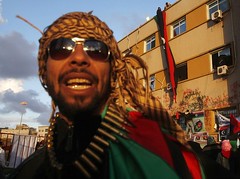Wassup Rachel Dolezal?
/Wassup Rachel, Do you like your chicken fried, baked, or smothered in gravy? Does your family eat chitlins, oxtails, pig feet, and fried catfish? Do you put Ham Hocks in your Collard greens? Do you go to church on Sunday mornings? When the church speaks, do you say Amen? Have you ever caught the spirit when you speak from the podium? Do you twerk? Can you twerk? Have you ever been called a nigger or a nigga? Do you call white people crackers, honkies, devils, or trash? Do you speak with twang in your voice? Are you fluent in the Ebonics and Creole languages?
When you look at Black women who destroy their skins with lightening creams, what do you say? When you look at Black women who destroy their hair with relaxers, what do you say? Would you advise a little girl to go natural or wear a weave? Is your hair real or is that a weave?
Have you ever been denied a job because of the way your hair looks or the spelling of your name? Have you ever suffered racism and sexism at the same time? Do you believe American slavery is a hate crime? What do you think about a mentally ill Black veteran murdered by the Wichita police? Do you believe the massacre at the AME church in Charleston was a hate crime? What do you think about the Black Haitian-Dominicans on the brink of losing their citizenship? What does #Blacklivesmatter mean to you?
To all the Rachels in the world,
I do not have a problem with your mission to help a community that continually suffers from American oppression. I do not have a problem with your aim in educating young people on history that is not taught in schools. My problem lies in your inability to understand your own sickness.
I did not ask you those questions to receive responses. I asked because you believe that by wearing your hair in stereotypical Black hairstyles, Or darkening your skin, Or putting a pep in your step, you would achieve what.... Acceptance? Unity? Understanding? Solutions?
Rachel, a definition of a Black woman is not by the color of her skin, The texture of her hair, The hood she grew up in, The thickness of her lips, Or the box that she checks on a job application.
The definition of a Black woman is complicated because there is the social construct’s definition, Then a cultural definition, Then a psychological definition, Then a historical definition.
I have no problem with you identifying yourself as an African (gosh, humanity began there) But, I have a problem with your attempt to identify with my experiences as a Black woman. You can never walk a thousand miles in my shoes.
Why?
Because many Black women have done what you done, Mothers, grandmothers, sisters, aunts, cousins, who couldn’t obtain your level of success because they are Black women in a racist society.
Because many Black women have done what you done, ministers, educators, scientists, mentors, activists, doctors, nurses, and they achieved success AND never lied about who they are.
Rachel, I am no longer concerned about your ethnic origins or the integrity of your work. I am more concerned about your mental health. If you cannot see the similarities between you and the white missionaries traveling to countries in Africa, Asia, Central America, and South America with the mindsets that they are fixing the troubled natives and their problems.........
THEN YOU ARE THE PROBLEM.
There is an inexplicable war against people of color, women, religious groups, young people, elderly people, the mentally ill, the physically handicapped, and poor people, and you have the nerve to conduct magic by making your ‘whiteness’ disappear? Have you ever listened to the lyrics in Kendrick Lamar’s song: “you ain’t gotta lie to kick it my nigga?” I am watching people that look like me die by the day in the hands of police officers, hate groups, and yes, mentally disturbed people that look like me and you. My peers are upset and ready to take action, but do not through the wisdom of our elders and ancestors. Can you honestly relate to my experience? Are you mourning for Charleston? Or is this all not a race issue?
Instead of speaking to crowds about the experiences of being a Black woman, or being a Black person period, maybe you should have shared your experiences of conquering identity issues. They affect all of us. They affect us to the point where people feel the need to kill others over a natural identity that America transformed into a Sick, Social, Construct.
But I guess you never had my, a Black woman's, best interests at heart.
Many wolves are adorned in sheep's clothing so I dedicated to build my arsenal of mental and spiritual weapons. When my people are attacked by imposters and enemies, #Wewillshootback.
Do not worry. This is not a declaration of a physical, violent war. Only insight into the kind of world we live in. Rachels, if you are really about it, put on REAL armor and be ready to fight for the revolution through protests, writing, speaking, and boycotting. And be ready to mourn for those we lose in the struggle for they serve as reminders that the battle is definitely not over.
Sincerely,
A. Black. Woman. Fighting for my community as I am.
Poet & Literary Critic: @Chrycka_Harper
Facebook: Chrycka Harper












































